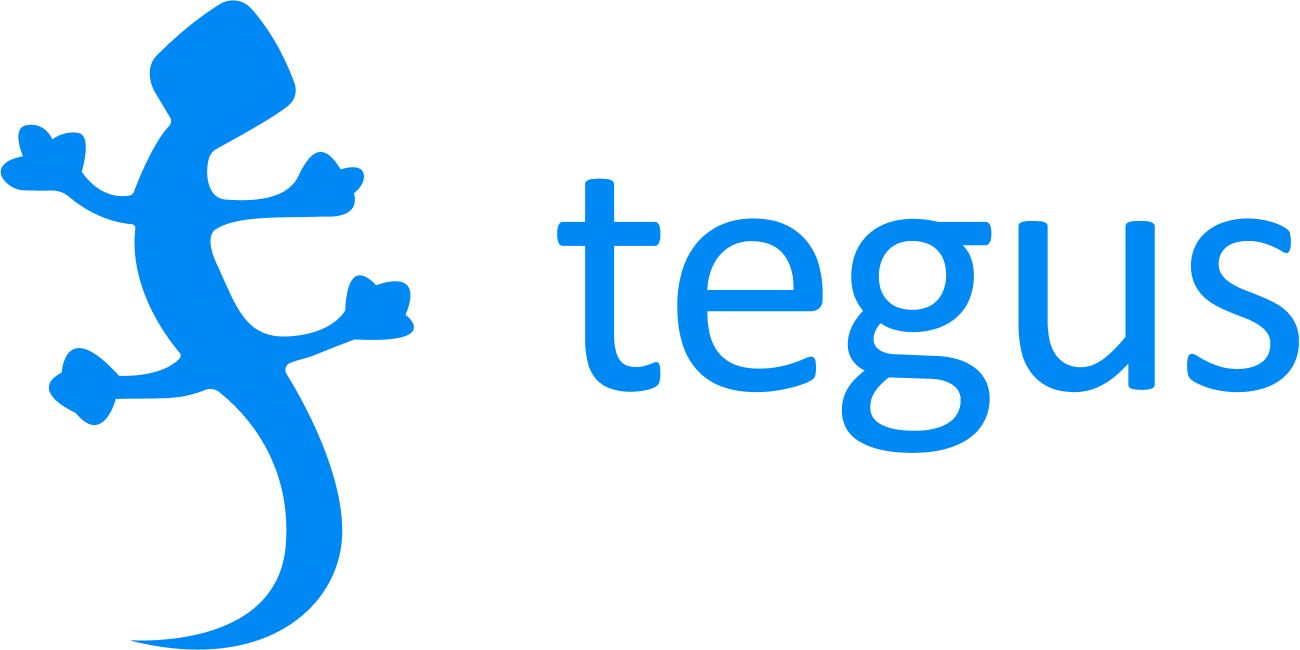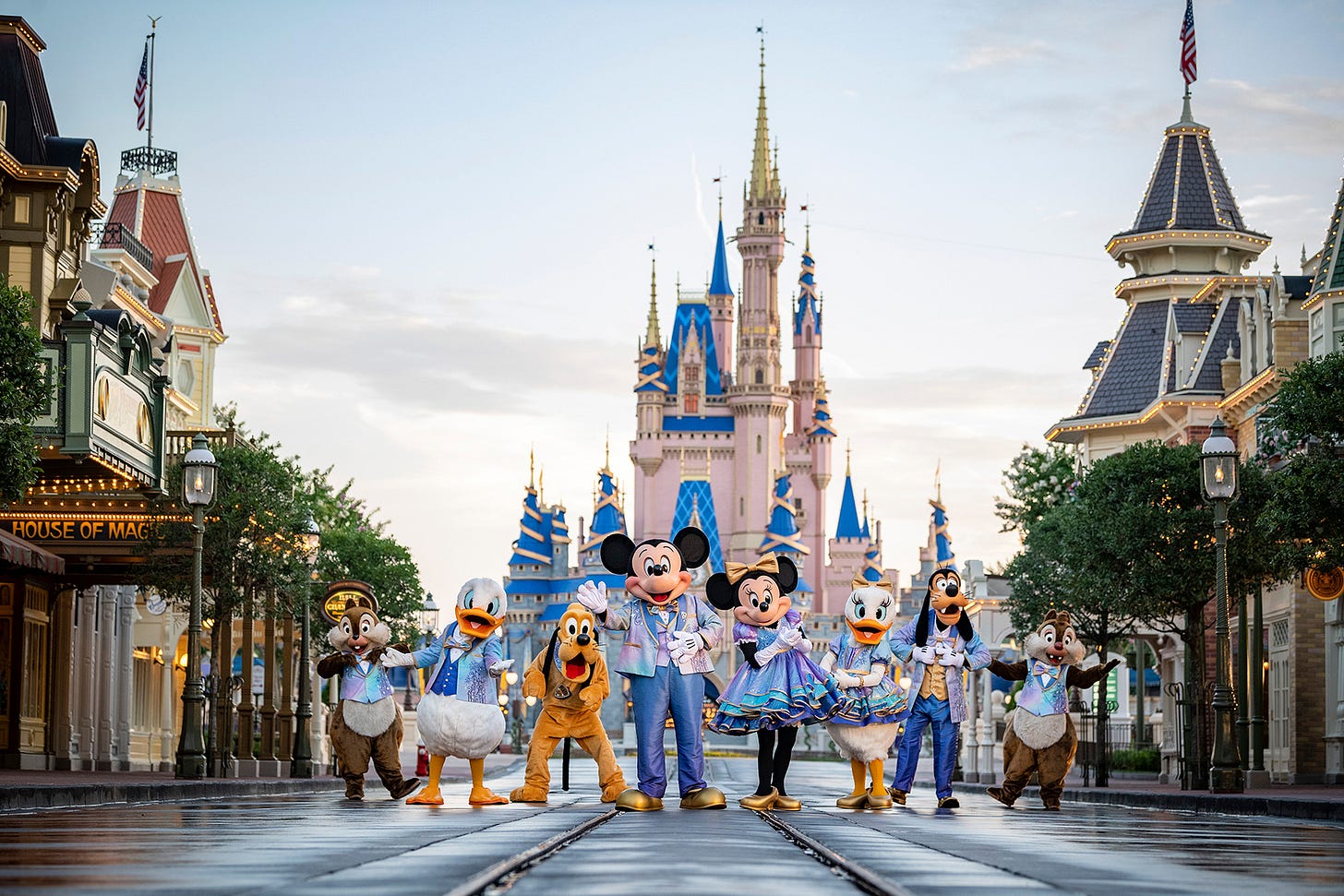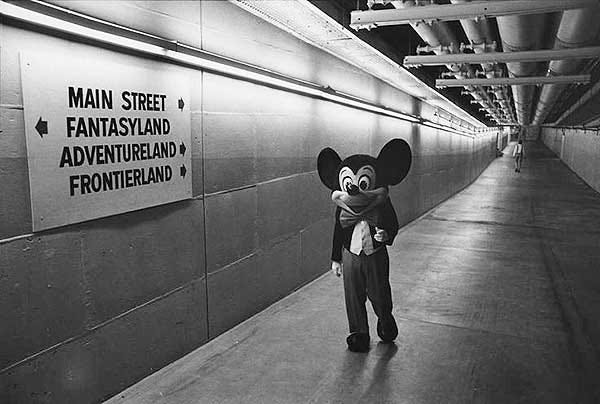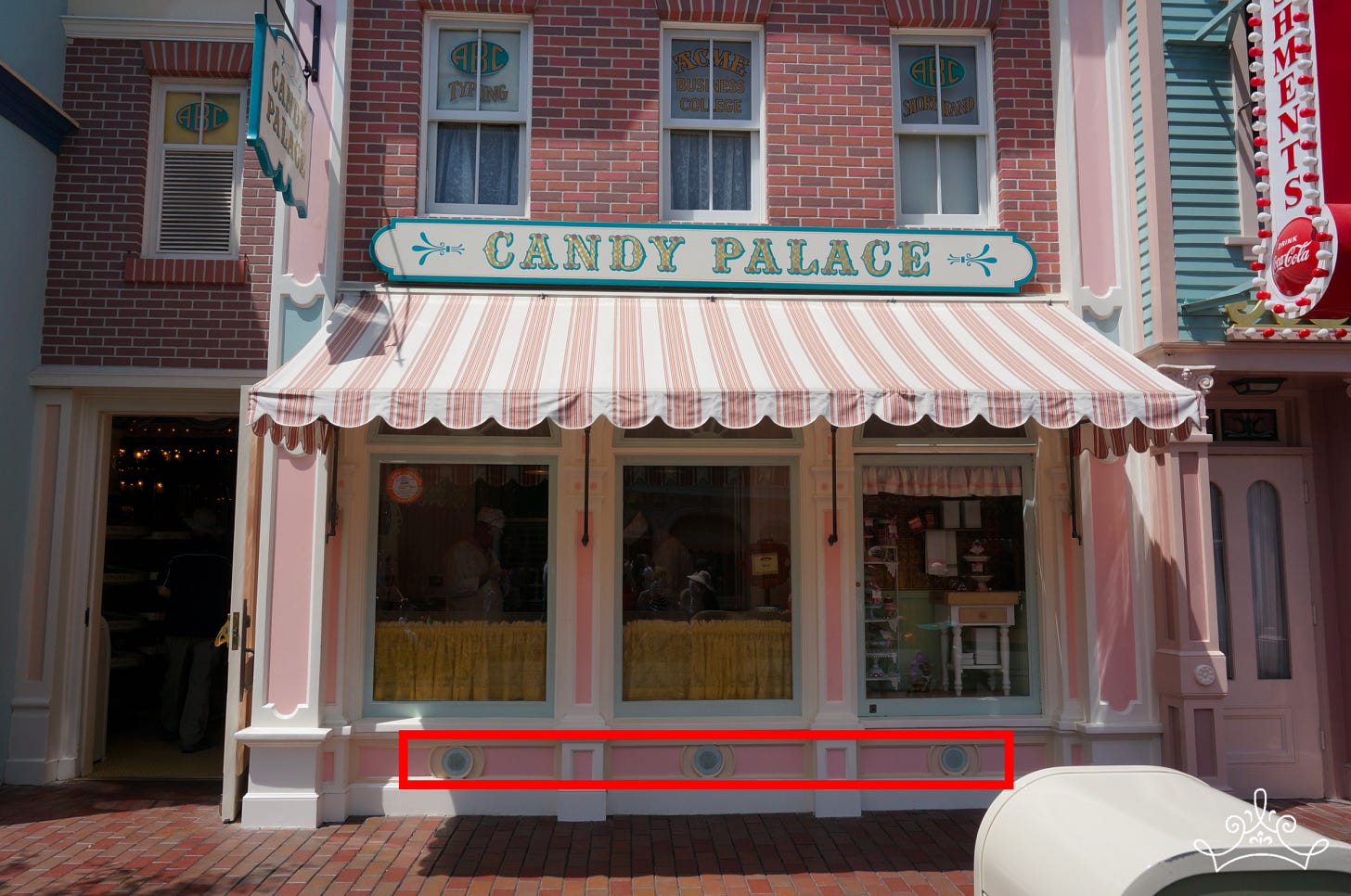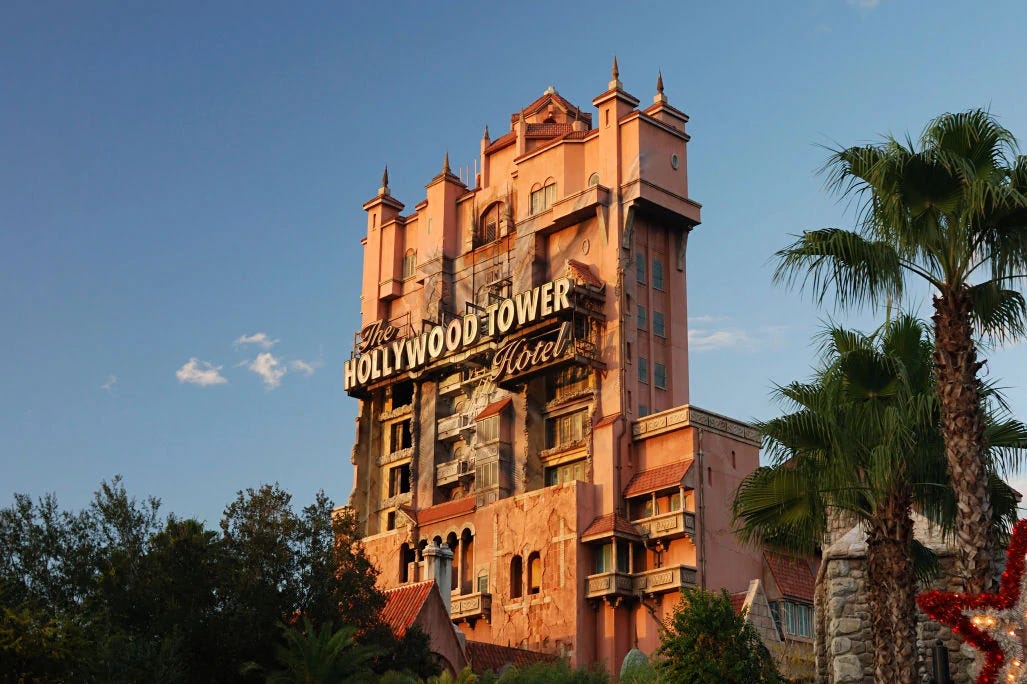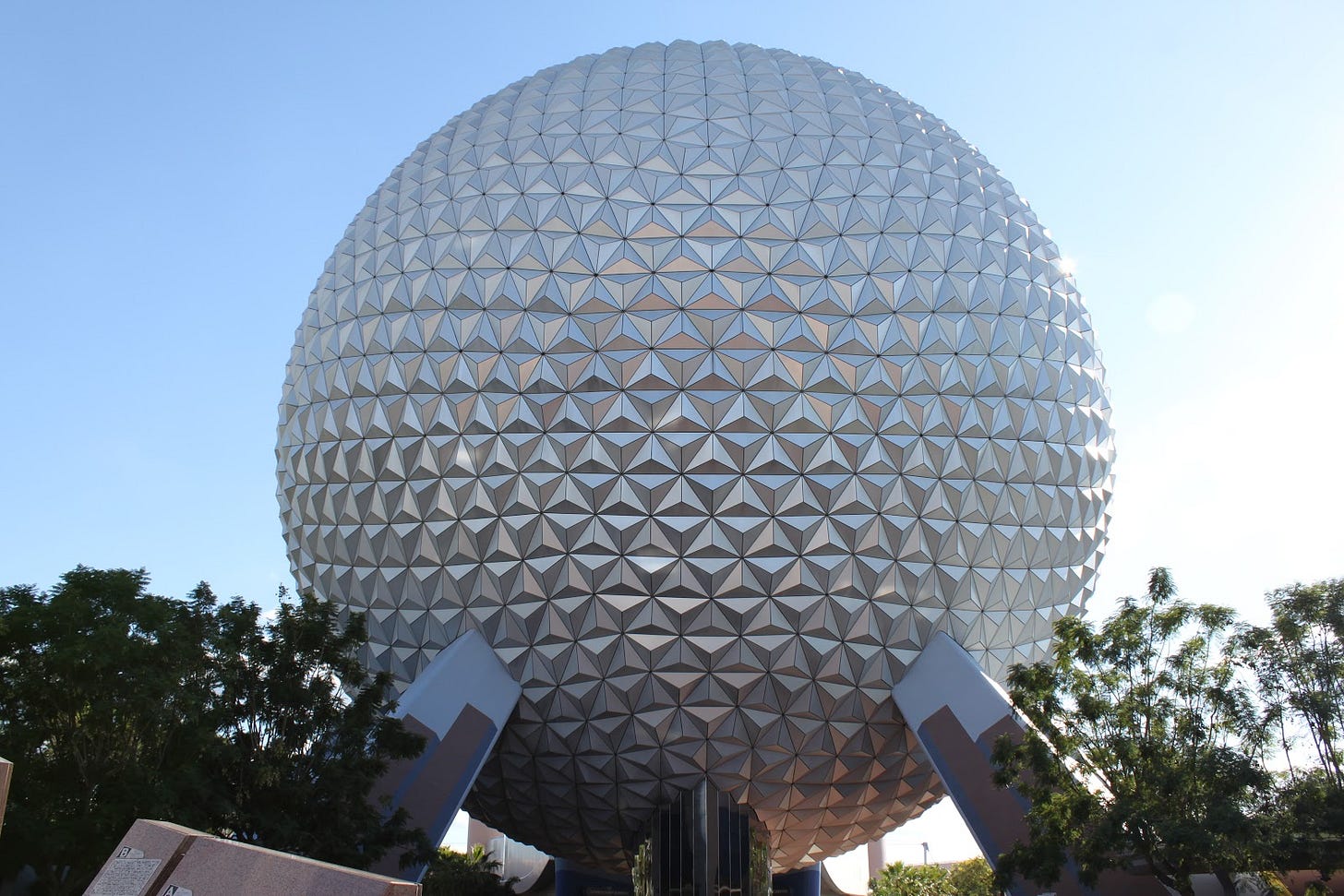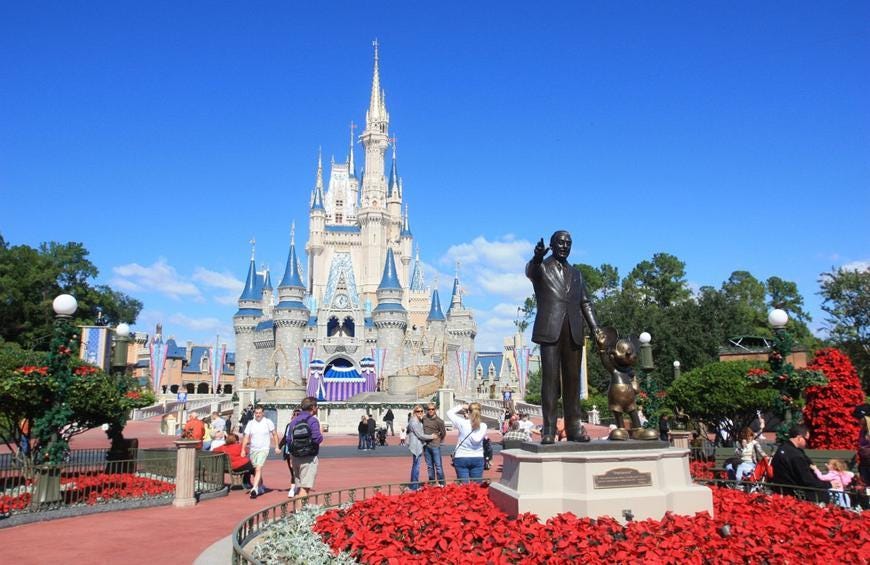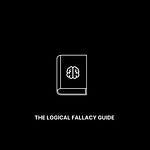Welcome to the 312 new members of the curiosity tribe who have joined us since Friday. Join the 37,845 others who are receiving high-signal, curiosity-inducing content every single week.
Today’s newsletter is brought to you by Tegus!
When I started to dive in on Disney, Tegus was my first destination—a cheat code for my research and learning process. Tegus is the leading platform for primary research—a searchable database of thousands of instantly-available, investor-led interviews with experts on a wide range of industries, companies, and topics. It’s fast and cost-effective, enabling you to do great primary research without breaking the bank.
Special Offer: Tegus is offering a free 2-week trial to all Curiosity Chronicle subscribers—sign up below to level up your investment research game today!
Today at a Glance:
Storytelling is a foundational skill for supercharging all human endeavors.
Disney was arguably the first company to prove that storytelling can create a durable competitive advantage that builds pricing power and a legitimate long-term business moat.
The key principles of high-leverage storytelling: (1) Suspended Reality, (2) Multisensory Experience, (3) Details Matter, and (4) Make It Shareable.
High-Leverage Storytelling
Storytelling is a foundational skill.
Humans are storytelling animals—our species developed around fires, telling tales of successes, failures, and fantasies, of hopes and dreams. It is woven into our DNA.
If we study the lives of the greatest humans, we quickly find that the vast majority were exceptionally strong storytellers. This is no coincidence—effective, high-leverage storytelling is a supercharger for all human endeavors.
The problem? We don’t study or teach storytelling in the same way we do other foundational skills.
Therein lies an opportunity, however—with few understanding the principles of storytelling, those who do are likely to capture tremendous career and personal upside.
In finance terms, it’s (basically) free alpha…
So in today’s piece, I’d like to talk about the principles of high-leverage storytelling, brought to life by a real world example of these principles in action…
Disney World.
Disney World
The Walt Disney World Resort—Disney World for short—opened on October 1, 1971. It was the second major theme park under the Disney umbrella, following Disneyland, which was opened in Anaheim, California in 1955.
Disney World celebrated its 50th anniversary on October 1, marking a major milestone on a historic run for the company, which now operates theme parks around the world.
Importantly, Disney was arguably the first company to prove that storytelling can create a durable competitive advantage that builds pricing power and a legitimate long-term business moat.
Storytelling is ingrained into the DNA of the company—its founder, Walt Disney, was history’s most obsessive storyteller.
So it is no surprise that storytelling is a superpower that's on full display at Disney World. The park—which covers 43 square miles (or 2x the size of Manhattan!) and has 77,000+ employees—can teach us valuable principles for enhancing our own storytelling.
This piece deconstructs the principles of high-leverage storytelling that make Disney World so magical (and that you can start using today):
Principle 1: Suspended Reality
Walt Disney was famous for his focus on suspending reality for his audiences—allowing them to fully experience a new reality he was creating while still being grounded in the safety of their own reality.
It is a balancing act—too cold and you never capture the audience, too hot and people retreat to the safety of their reality and disappear.
The Imagineers—a brilliant group of creatives, artists, and engineers in charge of designing the theme parks—have executed against this principle brilliantly.
It’s on exhibit in several secrets of the park:
The Tunnel Network
An intricate web of tunnels lies underneath the park, enabling characters to navigate to their respective “worlds” without ever appearing out of world or duplicative.
This is critical, because an out of place character breaks the suspended reality for the guests, so Disney created an (expensive) solution.
Further, the entire park is designed to create a separation of worlds and maintain the distinction within each domain. You cannot see into other worlds, which creates a legitimate immersion that reinforces the suspended reality.
Forced Perspective
Forced perspective is a visual technique which uses optical illusions to make an object appear farther, closer, larger or smaller than it actually is. The technique manipulates our visual perception by using scaled objects and the relationship between them and the viewing point of the customer.
Disney uses forced perspective throughout its parks to create optical illusions that make objects appear different than reality.
A key example: Cinderella's Castle, which has smaller bricks and windows near the top, making the castle look farther away and taller than it is.
Purple Traffic Signs
The departure from reality begins before you ever step into the park.
Purple and red traffic signs replace the traditional green and yellow—just another detail that creates a clear separation from the real world.
There are no coincidences in high-leverage storytelling. Everything is by design.
Era-Appropriate Bathrooms
Disney takes the suspended reality to another level with its plumbing.
Liberty Square—a colonial world—is notably lacking in one thing: bathrooms (other than in the restaurants, where they are legally required to exist).
If colonists didn’t have bathrooms yet, neither do the guests of the colonial world!
Principle 2: Multisensory Experience
Disney knows that one of the key strategic advantages of its parks is the ability to create multisensory experiences for its fans. These experiences build relationship depth that is impossible to replicate.
It’s also a durable competitive edge, as it’s almost unfathomable to imagine a competitor acquiring 40+ square miles of land to create a similar experience. The physical experience has become a business moat.
A few examples of the multisensory experience at Disney World:
“Smellitizers”
The Imagineers recognized the human sense of smell is closely connected with our formation of memories, so they built a mechanism to reinforce this process:
"Smellitizers”—hidden fans that blow scented air through vents in the park.
The effect: strong, sticky, delicious memories made.
Amplified Sounds
Sounds are a key part of the Disney World storytelling experience.
Horses wear specially-designed horseshoes that make them louder when they walk down Main Street.
The Tower of Terror plays a recording of real screams on hidden speakers for guests walking by.
The splash sound at Splash Mountain is amplified by a splash machine.
Principle 3: Details Matter
To create truly immersive stories, Disney’s Imagineers know that the details really, really matter. They might be difficult to spot—they hide in plain sight. But for the trained eye, they’re observable throughout the park.
Here are a few examples:
EPCOT Rainwater
EPCOT—previously an acronym for Experimental Prototype Community of Tomorrow—is a theme park within Disney World. At its center is a large geodesic sphere called Spaceship Earth.
It’s an engineering thing of beauty, but given its shape, it had the potential to be a guest’s nightmare during a classic Central Florida downpour.
To avoid this, the Imagineers designed the surface with one-inch gaps in the panels. As water hits the sphere, it's collected into an intricate gutter system and routed to the nearby lagoon.
Trash Collection
A clean park is a key part of the pristine storytelling experience.
You're never more than 30 steps from a trash can.
Trash shoots around underground via the Automated Vacuum Assisted Collection System—“AVACS" for short.
Oh, and you’ll never be able to buy gum in the park.
Miscellaneous Details
Disney World American flags are missing a few stars, so they aren't required to follow typical U.S. flag code. This means they never have to fly at half mast, which Walt Disney believed would hurt the appearance of the flags.
Mosquitos would ruin a guest’s experience, so Disney uses a garlic-based repellant that is undetectable to humans but functions brilliantly in keeping mosquitos at bay in the swampy lands of Central Florida.
Disney World is a no-fly zone, keeping outside noise pollution very low. The sounds you hear are only what the Imagineers want you to hear.
Principle 4: Make It Shareable
This goes back to our fireside storytelling roots.
The greatest stories are built to be shared—to be told around the fire to our family, friends, and enemies. We share our experiences and pass information and insights from one generation to the next. This is what makes us human, and it is a key driver of what has allowed us to develop and compound our knowledge and progress over time.
Walt Disney was aware of the power of shareability. The Imagineers have woven shareability into the foundational fabric of the park.
Two key examples:
Cinderella's Castle
It's (almost) impossible to take a bad photo of yourself in front of Cinderella's Castle.
The castle (and all castles across all Disney theme parks!) faces north-to-south, meaning the sun is never directly behind it.
The result: no bad lighting for a quintessentially shareable photo in front of the iconic landmark.
Colored Concrete
The unique colored concrete at Disney World is another subtle driver of shareability of the experience.
The concrete—a brainchild of Disney and Kodak—creates more vivid photographs than traditional concrete and also makes the green grass appear greener.
All intentionally designed for enhanced shareability.
Summary
To summarize, the four key principles of high-leverage storytelling:
Suspended Reality: Create a new world for the audience. Allow them to fully experience a new reality while remaining grounded in the safety of their own reality.
Multisensory Experience: Engage multiple senses to make your story stick. If it’s written, build vivid imagery into the writing. If it’s spoken, create sound effects to make the story pop.
Details Matter: Relentlessly focus on the details. In storytelling, they really matter.
Make It Shareable: Consider shareability as a key feature of the story. Aim to have a high “K-factor” of every story you tell. You want to build natural, organic evangelists.
I hope these four principles—as brought to life by examples from Disney World—are helpful as you continue on your own storytelling journey!
Sahil’s Job Board - Featured Opportunities
Launch House - Growth Specialist (NEW DROP!)
Matter - Design Lead (NEW DROP!)
Panther - Customer Delight Manager (NEW DROP!)
SuperLayer - CFO, Founding PM (NEW DROP!)
Free Agency - Sales Lead, Talent Agent for Tech (NEW DROP!)
Practice - Head of Marketing
Maven - Marketing Lead
SmartAsset - Acquisition Manager, Paid Search
Consensus - Lead Software Engineer
Fairchain - Software Engineer, Full Stack
Scaled - Direct of Operations
The full board can be found here!
We just placed a Talent Agent, Head of Community, Growth Lead, Swiss Army Knife, Account Exec, and several other roles in the last month. Results for featured roles have been awesome! If you are a high-growth company in finance or tech, you can use the “Post a Job” button to get your roles up on the board and featured in future Twitter and newsletter distributions.
That does it for today’s newsletter. Join the 37,750+ others who are receiving high-signal, curiosity-inducing content every single week! Until next time, stay curious, friends!



